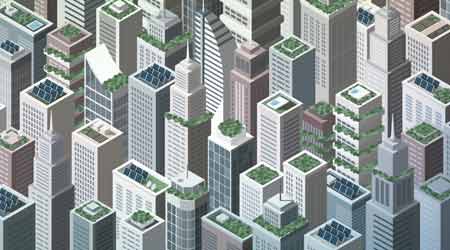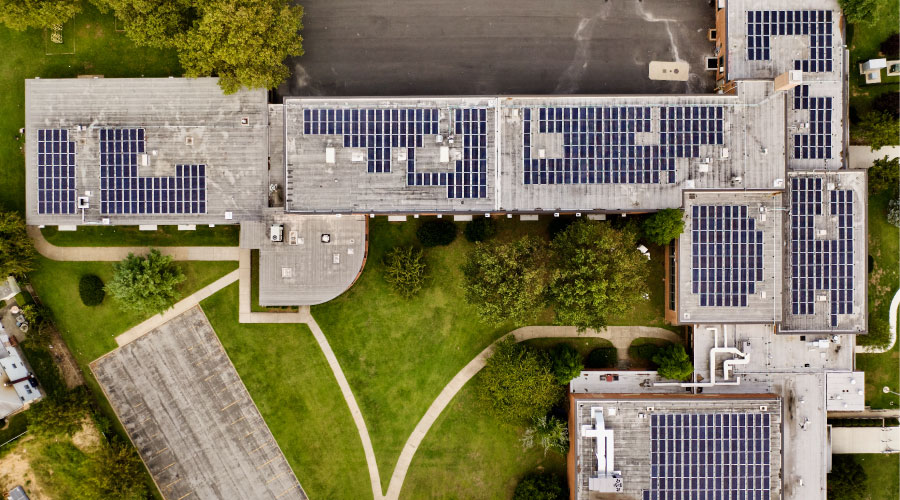Blue and Solar: Environmental Innovations In Roofing
Blue roofs — roofs designed to capture and store rainwater — and solar roofs are making huge headway as technology improves.
Blue roofs are making inroads in areas where controlling the rate at which storm water is released is an important issue. Also known as controlled flow roof drain systems, a blue roof is designed to capture and temporarily store rainwater, then release it at a controlled rate, similar in operation to conventional storm water ponds. They are ideal for use on buildings with flat or low slope roofs, particularly in urban areas.
Blue roofs use a variety of different methods to have the roof act like a sponge, including check dams, restrictors in the roof drains, and specially designed trays that collect and hold the water. By controlling the rate of discharge, blue roofs can help the facility meet water quality release rates for the property. This is particularly important in urban areas that have a single sewer system to handle both storm water and waste water. A sudden influx of rain can overwhelm these systems, resulting in the flow of untreated sewage into rivers.
Blue roofs can also help to reduce building cooling costs. The additional materials on top of the roof’s membrane provide extra thermal insulation, while evaporation of water from the roof helps to cool the roof. Some system designs also spray the water back onto the roof to further cool the membrane and reduce heat gain through the roof.
When integrated with a green roof design, the blue roof can serve as a source of water for irrigation of the roof’s vegetation.
As with green roofs, it is essential that the structure of the roof be evaluated to ensure that it is capable of carrying the additional load imposed by the water being stored. Water, one inch deep, weighs slightly more than five pounds per square foot.
The roof membrane itself must be in good condition and any penetration through the membrane must be 100 percent watertight. Normally the roof is designed to get water off of the roof as quickly as possible. That reduces the potential for leaks from any defects in the roofing system. Blue roofs, however, do the opposite, holding water for a slow release. Any defects in the membrane will increase the risk of leakage.
Blue roofs increase the cost of a roof by one to two dollars per square foot on average, with minimal additional annual maintenance costs.
Solar roofs
Solar panels for roofs have been used for several decades. Improvements in panel efficiencies and manufacturing techniques have reduced their cost sufficiently to make them cost effective in many rooftop applications. But the technology did not stop there. Tesla has introduced a new generation of solar roof tile that, unlike conventional solar panels, functions as the roofing material itself.
The solar roof panels are more like a tile than a typical solar panel, and look like conventional roofing materials, such as asphalt shingles, terracotta tile, or slate. Installed like conventional roofing shingles, each tile contains solar cells invisibly embedded within the tile. With a higher efficiency than conventional solar panels, the tiles are reported to capture and convert up to 98 percent of the solar energy striking it. The systems are suitable for use in new construction as well as re-roofing projects.
The systems do have one major drawback: cost. Roofing materials for a conventional asphalt shingle roof are typically less than two dollars per square foot. Materials for the Tesla solar tile roof cost approximately $22 per square foot. To determine if the product is right for an application, it will be necessary to weigh the additional cost of the tile installation against the power that it will generate over a minimum of 30 years.
Related Topics:














